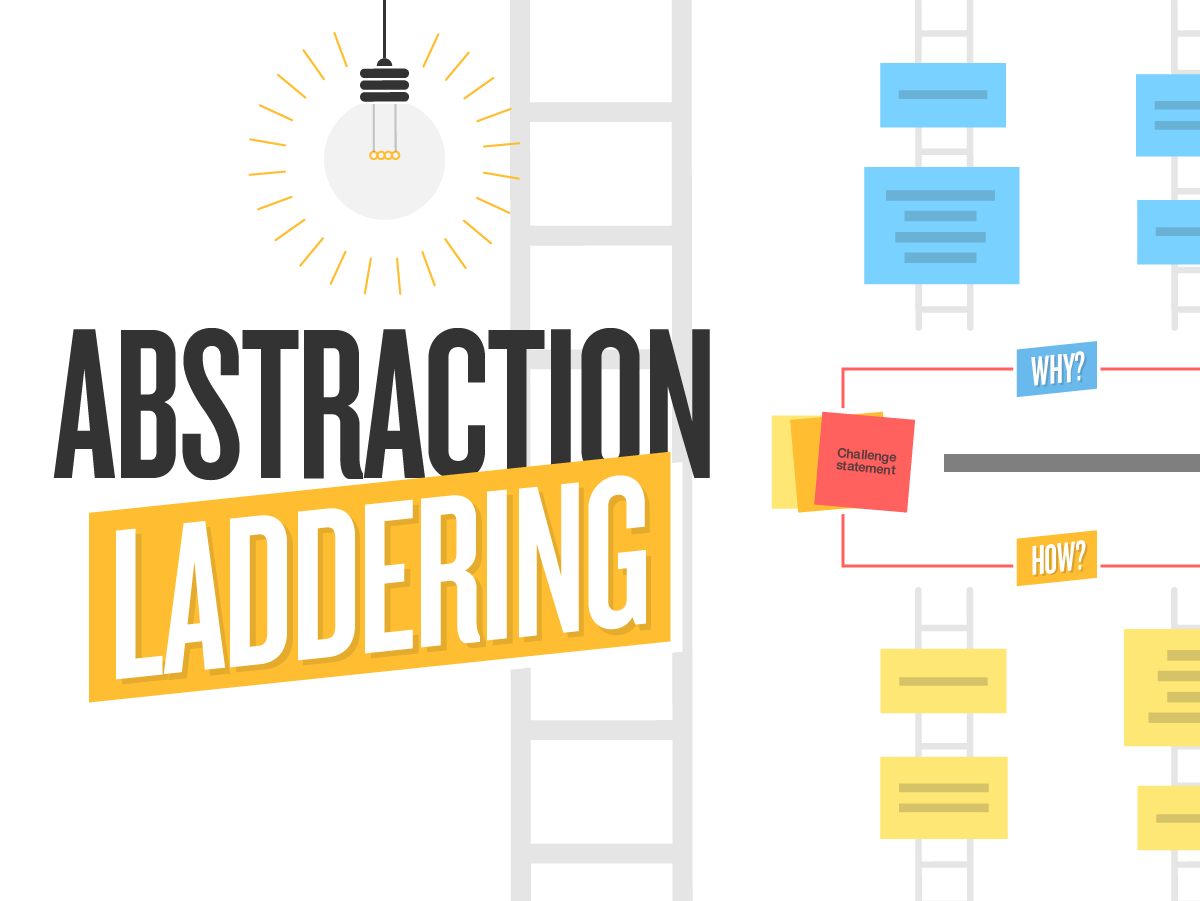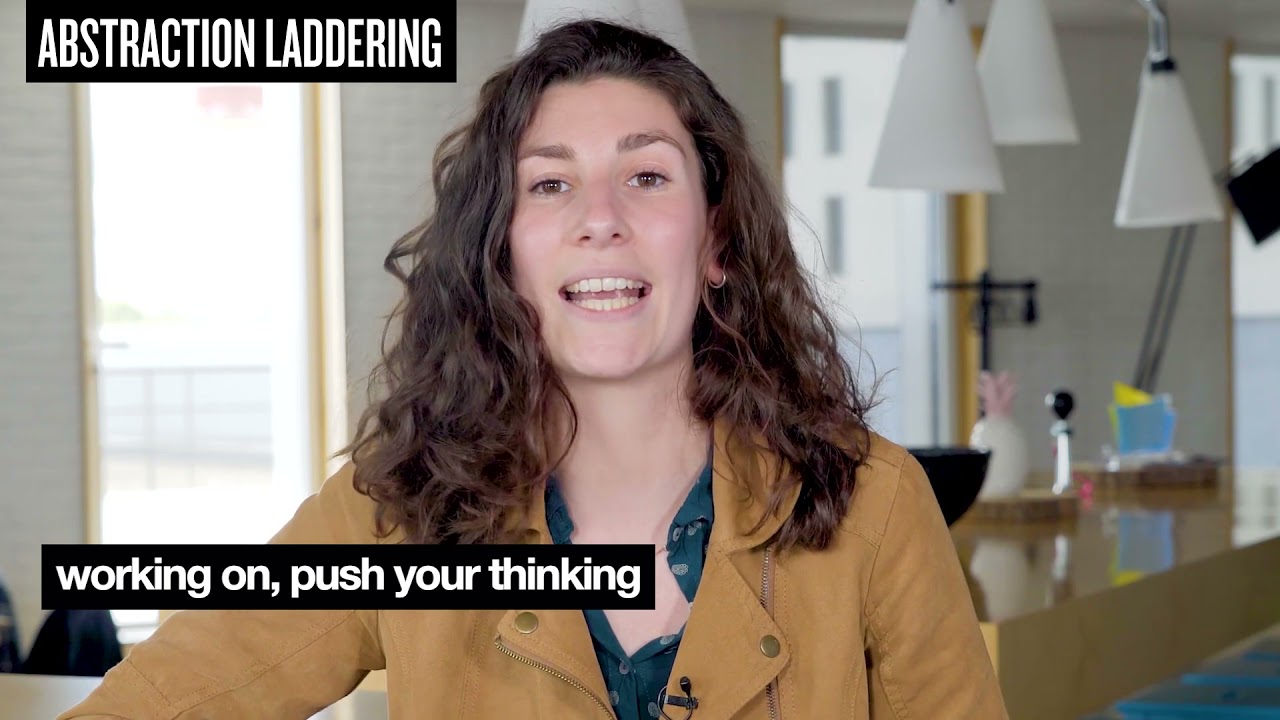Abstraction Laddering: Precise problem framing
Published on September 24, 2025
Abstraction Laddering: Precise problem framing


With the Abstraction Laddering template, take a step back and expand team thinking to get a deeper understanding of your problem. This design thinking method uses the ladder analogy to give some thought to a topic and to get a deeper understanding of it. Go up and down the ladder asking "Why?" and "How?" to visualize your team challenge as a whole and respond to it.

While working on a project, you may feel the need to take a step back from a topic that is blocking the progress of the team as a whole, or explore a theme or an idea in more depth. Follow the design thinking steps of this "ladder of abstraction" and you will unblock these situations in the most surprising way.
With the Abstraction Laddering template, you can find new ideas as a group, whether you are physically together in a meeting or working remotely. The ladder visually represents your problem. Climbing up the ladder is all about answering the question "why?". This involves defining increasingly broad and conceptual goals. The second step, going down the ladder invites you to answer the question "how?", which encourages you to look for more specific and concrete solutions.
With this specific workshop you can take a step back, expand team thinking and get a deeper understanding that will kick start your progress.


With your team, add as many ideas as you can to get the most accurate overview of your upcoming challenge.
Moving from the concrete to the abstract and vice versa is an exercise that can be practiced daily without even noticing. No need to be an expert in design thinking techniques to practice this form of brainstorming.
Used as a team, in one direction it helps you get a bird's eye view, step outside the box and expand it to put your goal in perspective. In the other, to narrow down the avenues of thought to find or refine solutions. It can also give you an opportunity to overcome mental inertia together simply by playing with words.
In addition, whether it's about better communication and teamwork, to come up with more ideas or facilitate knowledge transfer, interacting on two levels raises awareness of two main "cognitive" styles: concrete thinkers and abstract thinkers. With this method, you involve the whole team in the search for ideas: solution specialists, creatives and designers alike.
Start by inviting your team members to your whiteboard, then explain to them the purpose of this design thinking workshop. You can indicate the issue to be covered in the meeting in the “Challenge statement” box, in the middle of the ladder.
Then, launch a brainstorming session to "climb the ladder", namely asking participants to answer "why?" this goal, this question, this problem, and so on.
Next, spend the same amount of time answering the question "how?" to go down the ladder. Participants must then send more concrete ideas and solutions as they go down.
The idea is to try to match ideas and solutions to each expressed conceptual goal.
Remember, the space is infinitely scalable, so feel free to move, rearrange or copy any item on the whiteboard with the selection tool.
Get inspired by other templates from the same categories
Unlock your teamwork potential